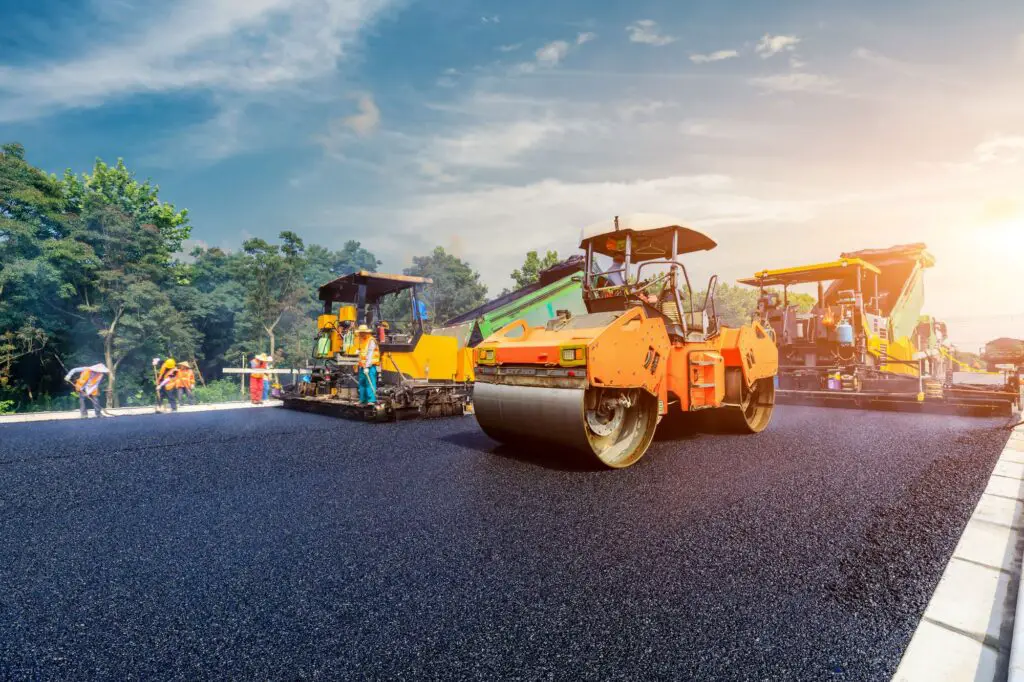A civil engineer plays a pivotal role in the construction industry, responsible for the planning, design, construction, and management of various civil engineering projects. These projects span various sectors, including transportation networks, such as roads and bridges, coastal defense structures like sea walls, and railway systems.
To effectively execute their duties, civil engineers must utilize a diverse set of tools that cater to the unique requirements of their profession. This article will explore the essential tools civil engineers use to bring their innovative projects to fruition.
Also Read: The 5 Best Concrete Screed Tools For The Job
What tools does a civil engineer use? Here they are:
Safety Gear
Civil engineers employ a variety of safety equipment to safeguard both themselves and construction workers from potential hazards while performing their tasks.
The selection of safety equipment depends on the specific job at hand, with some of the most commonly used items including:
- Helmets – Designed to shield the head from falling objects, these are worn to minimize the risk of head injuries.
- Fall Protection – This equipment, such as harnesses and scaffolds, is designed to prevent falls and mitigate the impact if a fall occurs, preventing direct contact with the ground.
- Industrial Gloves – Worn to shield hands from cuts and burns, these gloves are essential when using hand tools like welding machines and saws.
- Safety Boots – Equipped with anti-slip soles, these boots help prevent slips and falls on construction sites.
- Eye Protection – Safety glasses or goggles provide a barrier against flying debris and particles generated during construction activities, protecting the eyes from potential harm.
- Reflective Clothing – High-visibility garments ensure that all individuals on a construction site are easily visible, enhancing overall safety and awareness.
By using these safety measures, civil engineers and construction workers can maintain a secure working environment while carrying out their essential duties. Also, ensure you source these tools from quality suppliers, like Data Powertools Ltd. Quality safety equipment won’t fall short and fail to safeguard you when needed.
Also Read: 5 Construction Tools & Equipment That Will Make You Get the Job Done

Hammers
A hammer is a versatile hand tool featuring a metal head positioned at a right angle to its long handle, utilized for various purposes in civil engineering projects.
Like Us on Facebook!
Hammers serve multiple functions, including driving nails into wood, breaking rocks, and performing demolition tasks. There are several types of hammers, each designed for specific applications:
Subscribe Us on YouTube!
- Claw Hammer – assists in removing and driving in nails.
- Ball peen – aids in shaping metals during fabrication and other metal works.
- Sledgehammer – mainly used for demolition works and driving beams, metal, and other elements into the ground.
- Brick Hammer – Used to split stones and brickwork into small pieces, especially for hardcore work.
- Bushing Hammer – Used in masonry for hardscaping.
The difference between the hammers is the head. Each hammer is shaped to execute its function efficiently.
Also Read: Reconnaissance Survey – Advantages – Disadvantages – Types
Saws
A saw is a handy tool made of a thin serrated blade, which can take several shapes, from circular to rectangular. Civil engineers use saws to cut through construction materials like metal and stone.
Common types of saws are:
- Hack Saw– aids in cutting iron and copper.
- Circular Saw– used to cut metal, ceramics, and stone.
- Compound Miter Saw– it cuts through masonry, metal, and plastic.
- Fret Saw- used to cut through unique shapes, where regular saws can’t maneuver.
The difference lies with the use of the saw. Ensure you adopt the right blade for the task, all for safety purposes.

Heavy Machinery
Heavy machinery are heavy-duty vehicles that perform heavy construction tasks. Civil engineers also use them for earthworks, road paving, and compaction.
The different types of heavy machinery are:
- Excavators – used for road excavation and demolitions.
- Compactors – used to compact shallow layers of asphalt.
- Graders – used to level the road surface.
- Loaders – used to load excavated soil or demolition waste for dumping.
- Pavers – evenly distributes asphalt on the road.
- Telehandlers – they’re hoisting equipment used to lift construction materials and workers to higher heights as they build footbridges and other structures.
Software
Before a civil engineer heads to the construction site, they must design the road or footbridge. They’ll need software for designing and managing projects.
They’ll need design software like AutoCAD, SketchUp, and Revit.
Project management software aid in planning and scheduling projects to execute them within the agreed timeframe and budget. These tools include Asana, Jira, Trello, Smartsheet, etc.
Levelling Tools
Leveling tools are used to measure heights in construction. Civil engineering requires accuracy for safety purposes, and leveling tools assist them in achieving this.
There are many types of leveling tools, which are:
- Dumpy Level – used to transfer measurements horizontally.
- Digital Level – they’re also used to measure elevations to precision.
- Aneroid Barometers – used to measure vertical measurements by relying on the barometric pressure.
- Hypsometer – used to measure heights and altitudes.
- Theodolite – aids in measuring vertical and horizontal angles between two designated points.
The choice of the leveling tool depends on what’s available and the project surroundings.
Concreting Equipment
Concreting equipment aids in preparing a concrete mix using cement, sand, and aggregate. Civil engineers use concrete to cast bridges, beams, columns, and culverts.
The types of concreting equipment include:
- Concrete Mixer – evenly mixes the cement, aggregate, sand, and water.
- Concrete Pump – transports concrete mix from the production area through a pistol or pump to the casting area.
- Concrete Vibrator – assists in spreading the cast concrete evenly while removing air spaces.
Conclusion
The discussion above details the tools civil engineers use to execute their projects. With this insight, you’re better placed as a civil engineer or project manager to know the tools to acquire for your upcoming civil engineering project. However, remember the choice of tools depends on the project’s scope of work.



















